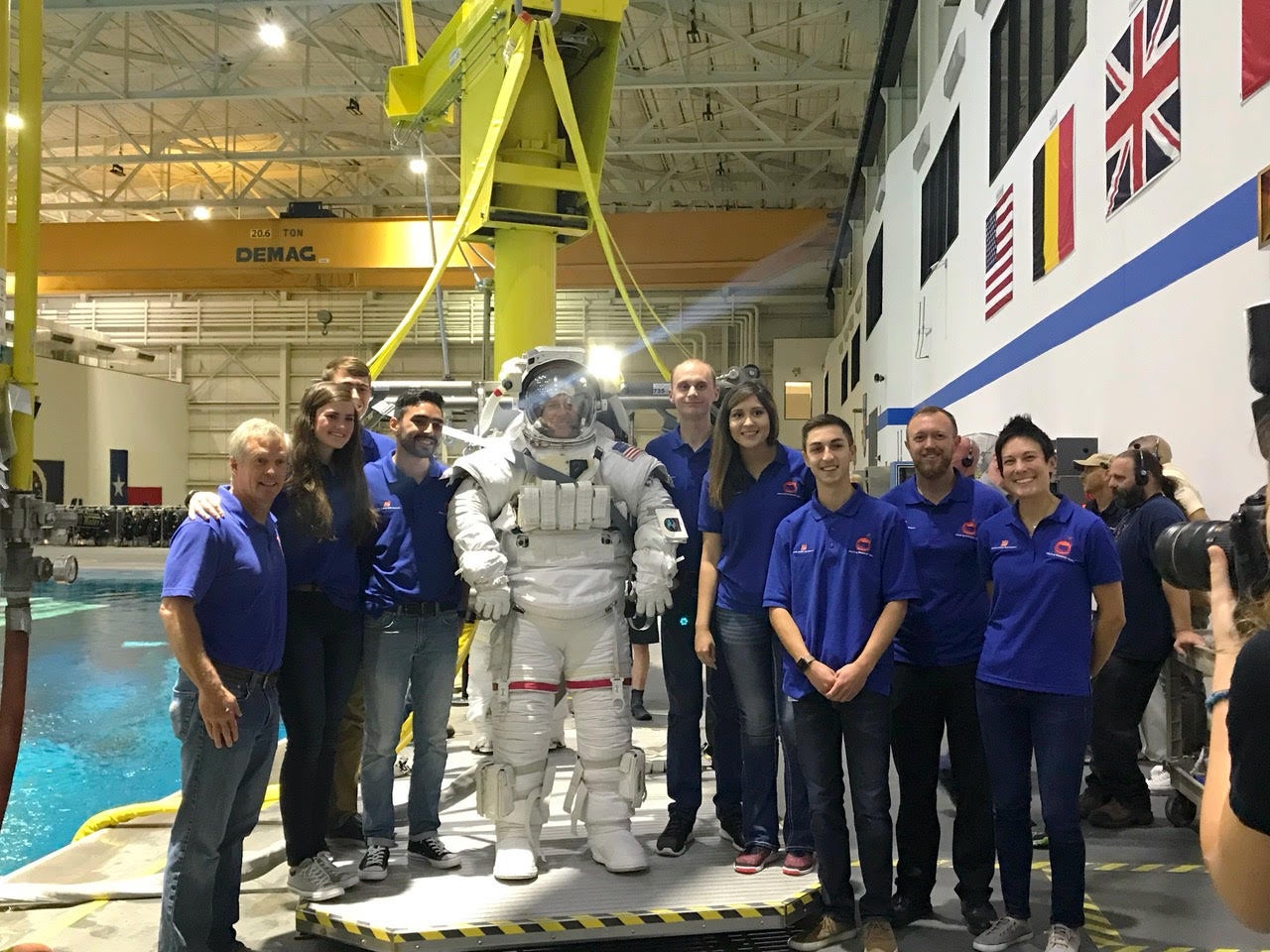
What is the ambitious goal of this project?
The NASA Micro-g VIP team participates in NASA’s Microgravity University Micro-g NExT challenge Micro-g NExT challenge. For the challenge, the team will design and build a prototype tool or device for NASA. Usually, the tool or device will be used by astronauts on spacewalks and consequently will be tested in the neutral buoyancy laboratory (NBL) at the Johnson Space Center JSC). A subset of the team will go to JSC to test the prototype in the NBL. In the fall semester, the team will research the problem and determine what has already been done in this area and what technologies from other areas can be used to help solve this problem. Using this information and their own knowledge, the team will produce a creative solution to the challenge and develop an initial design of their prototype, culminating in a written proposal to NASA. In the spring semester, the team will refine their initial design and implement their design.
Experience Gained
The team will use an iterative process of implementation, test, and redesign to ensure their prototype meets their requirements as well as NASA’s. The team is student-led allowing for students to get leadership experience working on a NASA project. Also, during both semesters, the team will perform outreach to local schools and organizations to inspire and educate the community about STEM and NASA.
Check out the team’s NASA NExT page for more examples.
Majors or Interests Needed
- Bachelor of Applied Science
- Biological Sciences
- Chemistry-Biochemistry
- Communication
- Computer Science
- Economics
- Education
- Environmental Studies Program
- Geosciences
- Materials Science & Engineering
- Mechanical and Biomedical Engineering
- Multidisciplinary Studies
- Sociology
- Urban Studies & Community Development
VIP Coach Information
Dr. Steve Swanson is a Computer Scientist, former NASA astronaut, and now a Boise State Distinguished Educator in Residence. Read more at Dr. Steve Swanson.
In addition, Steve coaches the Autonomous Robotic Systems VIP team.
Course Information
Full semester course VIP 200, 400, 401, 500
Register for 1-2 credits.
Meeting times TBD.
Interested in joining this team?
For more information and to request a permission number to register contact Dr. Swanson at steveswanson@boisestate.edu OR complete this interest form and someone will contact you. Check out this page for tips on contacting a professor.
To register, search by Subject: Vertically Integrated Projects, read the project description to find the right section of VIP 200, 400, 401, or 500.
Here are instructions for using permission numbers Add with a permission number
Hear from students of the Micro-g VIP Team
Students Nuha Akhtar and Joshua Fernando of the Micro-g VIP Team explain what this VIP is about, what excites them and why you should join this team.
Video Transcript: Micro-g VIP Team
[Text on Screen] What is NASA Micro-g VIP?
[Nuha Akhtar, Team Lead, Micro-g VIP] So, Micro-G is essentially NASA releases challenges every year related to some upcoming space mission. And then, as students, we need to choose a challenge and write proposals, we create CAD designs, and then we actually get to propose our ideas to NASA. And if they like our idea, the second semester of school, we actually get to build, manufacture, and fly our tool down to Houston to test it out in a microgravity laboratory.
[Joshua Fernando, Team Lead, Micro-g VIP] They come to us, or they come to students like us, to figure out bright, fresh ideas because some of these problems they don’t even have a solution for.
[Nuha] And these projects are really interdisciplinary. We have a lot of people on our team. We have mechanical engineers, electrical engineers, we have computer science, we have a data analysis major in our group. Like, we really want everybody to come.
[Text on Screen] What are we doing this semester?
[Nuha] So, the problem right now is that astronauts have to manually tie wire ties around different objects and wires. So, it creates a lot of opportunities for things to go wrong. And this year our project is called the “Zero-G Zip Tie Revolver.” So we have to make a fully mechanical device that can install zip ties on the ISS.
[Joshua] So, in order to do that, we gotta not only just figure out the design, we need to actually build it.
[Text on screen] What excites me about this VIP?
[Joshua] Learning how to transfer that knowledge into a computer to get even more precise measurement from, thousandths of an inch to even half tenths of a millimeter.
[Nuha] What I’m really excited about this year, at least, is as a team lead, I’m getting a lot more experience becoming project lead, managing, um, a lot of things that I probably wouldn’t have experienced as just doing things in the classroom.
[Text on Screen] Why join Micro-g?
And I mean, how often do you get to have an advisor that’s a retired astronaut? It’s a pretty cool opportunity. So, I mean, it wasn’t too hard to convince me to join.
[Joshua] And I’m glad that I was able to practice being such a big project like that.
[Text on Screen] Through VIP Teams, Boise State students are changing the world and earning academic credit along the way.
